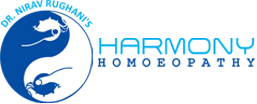Psoriasis
Symptoms of Psoriasis
Peculiarly identified by the nature of the lesions, Psoriasis has a unique presentation in most cases - one that cannot be missed. However, the symptoms may vary from person to person in terms of the location, spread, severity and duration of the lesions. Principally, few or all of the following features can be seen in most cases:
![]() Red, thickened patches/lesions (called as plaques) on the skin – these may vary from small rain-drop sized lesions to large ones covering an extensive area
Red, thickened patches/lesions (called as plaques) on the skin – these may vary from small rain-drop sized lesions to large ones covering an extensive area
![]() The lesions are covered with silvery scales
The lesions are covered with silvery scales
![]() Itching of the lesions is a common feature – there may be burning that occurs after scratching
Itching of the lesions is a common feature – there may be burning that occurs after scratching
![]() There may be discomfort or pain experienced at the site of lesions
There may be discomfort or pain experienced at the site of lesions
![]() The lesions are dry and excessive dryness may cause cracked skin and bleeding
The lesions are dry and excessive dryness may cause cracked skin and bleeding
![]() During the active stage of the disease, scratching or cutting the skin may give rise to new lesions at such areas (known as Koebner phenomenon)
During the active stage of the disease, scratching or cutting the skin may give rise to new lesions at such areas (known as Koebner phenomenon)
![]() Nails may be thickened, pitted or ridged. There may be discoloration of the nails and they may crumble or detach from the nail-bed
Nails may be thickened, pitted or ridged. There may be discoloration of the nails and they may crumble or detach from the nail-bed
![]() In case of joint affection, there is swelling and stiffness of joints
In case of joint affection, there is swelling and stiffness of joints
At this point, it is important to discuss the different types of psoriasis because the prognosis of the cases differs based on the type:
![]() Psoriasis vulgaris: This is the commonest form and is also called Plaque psoriasis. Seen in almost 9 out of 10 psoriasis patients, this presents as red raised patches with silvery scales.
Psoriasis vulgaris: This is the commonest form and is also called Plaque psoriasis. Seen in almost 9 out of 10 psoriasis patients, this presents as red raised patches with silvery scales.
![]() Guttate psoriasis: Small, rain-drop like lesions are seen to develop on the trunk and limbs in this type. Several weeks after a throat infection (particularly streptococcal), this form may develop suddenly.
Guttate psoriasis: Small, rain-drop like lesions are seen to develop on the trunk and limbs in this type. Several weeks after a throat infection (particularly streptococcal), this form may develop suddenly.
![]() Pustular psoriasis: The lesions in this kind of psoriasis are filled with pus besides having the other peculiar characteristics.
Pustular psoriasis: The lesions in this kind of psoriasis are filled with pus besides having the other peculiar characteristics.
![]() Inverse Psoriasis: Bright red, smooth patches are seen in the folds of the skin here. Common areas of affection are under the breasts, in armpits, near genitals, under buttocks and under abdominal folds.
Inverse Psoriasis: Bright red, smooth patches are seen in the folds of the skin here. Common areas of affection are under the breasts, in armpits, near genitals, under buttocks and under abdominal folds.
![]() Erythrodermic psoriasis: This is a rare form and can be quite serious. Patients develop intense redness and swelling of a large part of the skin, often accompanied by itching or pain. This can be triggered by severe sunburn, intake of steroids, etc. In severe cases, the patient may develop dehydration, fever, infection requiring hospital admission.
Erythrodermic psoriasis: This is a rare form and can be quite serious. Patients develop intense redness and swelling of a large part of the skin, often accompanied by itching or pain. This can be triggered by severe sunburn, intake of steroids, etc. In severe cases, the patient may develop dehydration, fever, infection requiring hospital admission.
![]() Nail psoriasis: Affection of fingernail and toenails is seen in many cases and appears as discolored thickened, pitted or ridged nails that crumble or detach from the nail-bed.
Nail psoriasis: Affection of fingernail and toenails is seen in many cases and appears as discolored thickened, pitted or ridged nails that crumble or detach from the nail-bed.
![]() Scalp psoriasis affects almost half the people who develop skin psoriasis. In these cases, the scalp has dry and scaly skin or heavily crusted plaque areas. The plaque flakes off or peels off in clusters.
Scalp psoriasis affects almost half the people who develop skin psoriasis. In these cases, the scalp has dry and scaly skin or heavily crusted plaque areas. The plaque flakes off or peels off in clusters.
![]() Psoriatic arthritis: Joint affection is seen in about 10 to 30 percent of people with psoriasis. Symptoms include swelling, stiffness and pain in the affected joints. This can be quite crippling in the advanced stages.
Psoriatic arthritis: Joint affection is seen in about 10 to 30 percent of people with psoriasis. Symptoms include swelling, stiffness and pain in the affected joints. This can be quite crippling in the advanced stages.
![]() Palmo-plantar psoriasis: Typically the lesions are seen on the palms and soles of the patient in this variety.
Palmo-plantar psoriasis: Typically the lesions are seen on the palms and soles of the patient in this variety.
Psoriasis, on account of the chronic nature of the illness and its effects on the looks of patients, can lead to many emotional problems such as:
![]() Anxiety
Anxiety
![]() Depression
Depression
![]() Anger, irritability
Anger, irritability
![]() Embarrassment
Embarrassment
Treatment of psoriasis must be targeted to deal with all of these emotional affections as well.
